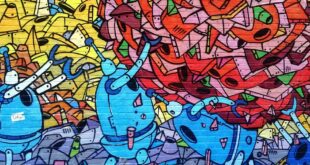From simple sketches to complex multimedia installations, digital art is a fascinating medium that has captured the imagination of artists and audiences alike. With the right software tools, a creative spirit, and an understanding of fundamental principles, one can create stunning and meaningful works of art that exist only in the digital realm.
But what exactly is digital art, and how can we unlock its layers to create something unique and meaningful? In this article, we will explore the definition of digital art, the tools and techniques used in its creation, as well as the possibilities and challenges that arise when working with this medium.
Defining Digital Art
Digital art can be described as artwork created using digital technology, from pencils and tablets to software programs that allow artists to manipulate images, animations, and video. Digital artists work with a range of materials – including photographs, video footage, 3D models, and soundscapes – and can combine these elements into complex, multimedia installations.
Each layer in a digital artwork represents a distinct element that contributes to the final image or animation. These elements can be the sketch, the colors, the lighting, the shadows, and other aspects that contribute to the artwork’s overall mood and impact. With the right tools and techniques, these individual layers can be manipulated, removed or added, to create works that span a range of styles, techniques, and media.
Tools and Techniques
The software tools used in creating digital art depend on the artist’s style and medium, as well as their level of technical expertise. Most digital artists use specialized software applications such as Adobe Photoshop, Blender, or Corel Painter to create and manipulate their artwork.
Each software program comes with its own set of tools and features – such as layers, masks, filters and blending modes – that allow artists to create, refine, and enhance their artwork. What makes digital art unique, however, is how these tools and features can be used to create layers that represent distinct aspects of the artwork and then modify and manipulate each layer individually, until the final composition emerges.
Unlocking the Possibilities
From 2D painting to 3D animation, digital art offers artists endless possibilities for creative expression. Through the creation and manipulation of distinct layers, digital artists can add levels of depth, detail and nuance to their artwork that goes beyond what traditional media can offer.
This flexibility allows artists to experiment freely with different styles, techniques, and media, as well as create highly diverse themes and subjects. Indeed, the richness and diversity of digital art is limited only by one’s imagination and technical skill.
Overcoming the Challenges
As with any medium, digital art comes with its own set of challenges. One of the most significant is the need for a full and thorough understanding of the software tools used – this understanding underpins successful use of layers and effects of an artwork.
Artist’s also need to be conscious of the creative possibilities and restrictions of exhibiting and sharing digital art, online environments being the most practical to achieving this.
So, while digital art brings immense creative potential, it comes with significant future considerations related to technical skill, equipment, software tools, and on line sharing channels. It is a medium that calls for highly skilled and focused practitioners to come to the forefront.
Nowadays, Unlocking the Layers of Digital Art is not an easy task, artist spend years performing a wide variety of practical and intellectual efforts – producing some of the most complex and meaningful art. With a keen understanding of both digital art’s broad and intricate layers and one’s creative applications and aspirations, we can look forward to experiencing some of the genre’s highly engaging visual stories, animations, and multimedia installations.
 Mind Uncharted Explore. Discover. Learn.
Mind Uncharted Explore. Discover. Learn.




